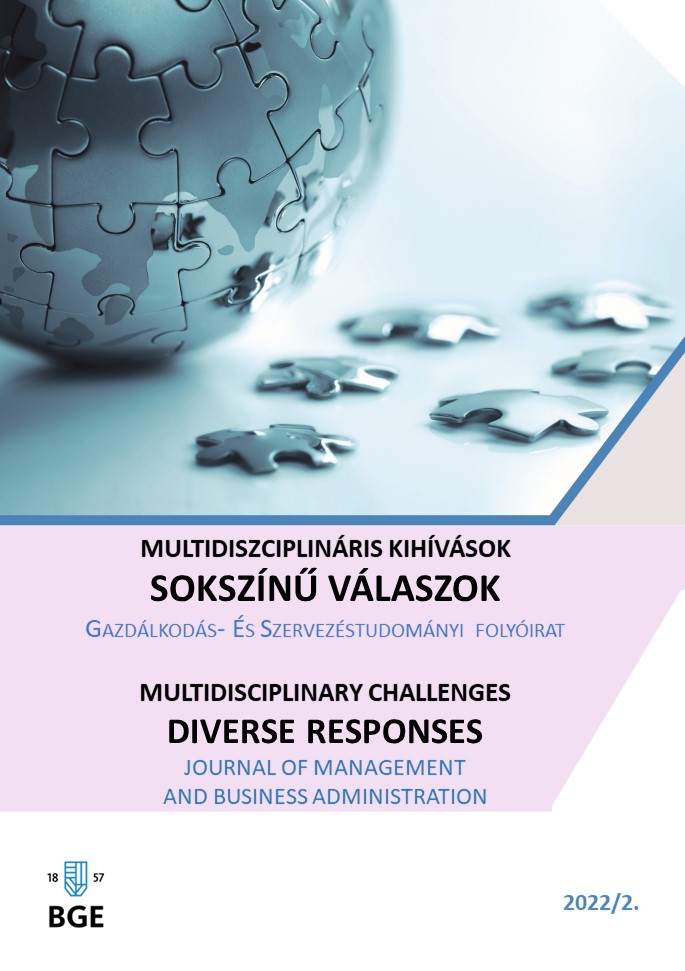Is the current population size in Hungary sustainable in the context of changing childbearing preferences?
Abstract
In our study, we review the main economic, cultural, and social processes contributed to the decline in the total fertility rate in developed countries. According to the result of the literature review these trends may persist in the future or may become even stronger, so an increase in the total fertility rate is unlikely in the long term. In a microeconomic model framework, we show that regardless of the marginal cost of the child, families with a smaller number of children become more and more ideal if the marginal benefit of the child for the parents decreases to a large extent. Based on the results of an international comparison, we came to the conclusion that the increasing total fertility rate observed in Hungary in recent years was largely the result of a slowdown in fertility postponement, and the increase in the ratio was observed in most countries of the region. The change in family support programmes affected this process less. As a result, the favourable trends of the past decade may be reversed in the near future, with the total fertility rate in Hungary set to fall significantly again. This is also confirmed by the fact that the positive correlation between fertility and GDP per capita observed in the early 2000s has significantly decreased in developed countries, and in the light of the latest data, it has completely disappeared in the European Union. Without confronting changing preferences, it is therefore worth thinking about how to reallocate resources to better adapt to the challenges of an ageing society.
References
/2019. (III. 12.) Korm. rendelet: https://njt.hu/jogszabaly/2019-44-20-22 Letöltve: 2022. június 18.
Aarts, O., Need, A., Grotenhuis, M. & Graaf, N. D., 2008. Does belonging accompany believing? Correlations and trends in Western Europe and North America between 1981 and 2000. Review of Religious Research 50(1), 16–34. https://doi.org/10.1111/j.1468-5906.2010.01535.x
Angrist, J., Lavy, V. & Schlosser, A., 2010. Multiple experiments for the causal link between the quantity and quality of children. Journal of Labor Economics, 28(4), 773–824. https://doi.org/10.1086/653830
Becker, G. S., 1960. An economic analysis of fertility. In: Demographic and economic change in developed countries (pp. 209–240). Columbia University Press.
Becker, G. S., 1974. On the Relevance of the New Economics of the Family. The American Economic Review, 317–319.
Becker, G. S., 1986. An economic analysis of the family. Economic and Social Research Institute.
Becker, G. S., 1992. Fertility and the Economy. Journal of Population Economics, 5(3), 185–201. https://doi.org/10.1007/bf00172092
Becker, G. S. & Lewis, H. G., 1973. On the Interaction between the Quantity and Quality of Children. Journal of Political Economy, 81(2, Part 2), S279–S288. https://doi.org/10.1086/260166
Ben-Porath, Y., 1973. Economic analysis of fertility in Israel: Point and counterpoint. Journal of Political Economy, 81(2, Part 2), S202–S233. https://doi.org/10.1086/260162
Berde, É. & Németh, P., 2015. Csehország, Magyarország és Szlovákia termékenységi idősorainak összehasonlítása, Statisztikai Szemle 93(2), 113–141.
Blake, J., 1981. Family size and the quality of children. Demography, 18(4), 421–442. https://doi.org/10.2307/2060941
Bleakley, H. & Lange, F., 2009. Chronic disease burden and the interaction of education, fertility, and growth. The Review of Economics and Statistics, 91(1), 52–65. https://doi.org/10.1162/rest.91.1.52
Bloom, D., Canning, D. & Sevilla, J., 2003. The demographic dividend: A new perspective on the economic consequences of population change. Rand Corporation. https://doi.org/10.7249/mr1274
Bongaarts, J., 1982. The fertility-inhibiting effects of the intermediate fertility variables. Studies in Family Planning, 179–189. https://doi.org/10.2307/1965445
Bongaarts, J., 2017. The effect of contraception on fertility: Is sub-Saharan Africa different? Demographic Research, 37(6), 179–189. https://doi.org/10.4054/demres.2017.37.6
Bongaarts, J. & Sobotka, T., 2012. Demographic Explanations for the Recent Rise in European Fertility. Population and Development Review, 38(1), 83–120. https://doi.org/10.1111/j.1728-4457.2012.00473.x
Buck, N. & Scott, J., 1994. Household and family change. In: Buck, N., Gershuny, J., Rose, D., Scott, J.: Changing Households: The British Household Panel Survey 1990–1992. University of Essex, ESRC Centre on Micro-Social Change, 61–82.
Cherlin, A. J., 1992. Marriage, Divorce, Remarriage. Cambridge, Harvard University Press.
Clark, T. C., 1969. Religion, Morality, and Abortion: A Constitutional Appraisal. Loy. ULAL Rev., 2, 1.
Davie, G., 1994. Religion in Britain since 1945: Believing without belonging. Oxford: Blackwell.
Doepke, M., 2005. Child mortality and fertility decline: Does the Barro-Becker model fit the facts? Journal of Population Economics, 18(2), 337–366. https://doi.org/10.1007/s00148-004-0208-z
Ehrlich, P. R., 1968. The population bomb. New York, 72–80.
ENSZ, 2000. Levels and trends of contraceptive use as assessed in 1998. New York: United Nations.
ENSZ, 2019. World Population Forecast. https://population.un.org/wpp/ Letöltve: 2022. május 25.
Élő, A., 2022. Orbán trükkje? – Támogatással vagy nélküle, térségünkben mindenütt nő a termékenység. Válaszonline, https://www.valaszonline.hu/2022/05/02/termekenyseg-kozep-europa-csaladpolitika-tamogatasok-demografia-oroszorszag-lengyelorszag/ Letöltve: 2022. június 20.
Furstenberg, F. F., 1995. Family change and the welfare of children: What do we know and what can we do about? In Karen Oppenheim Mason & An-Magritt Jensen (szerk.): Gender and Family Change in Industrialised Countries. Oxford, Clarendon Press, 245–257.
Gábos, A., Gál R. I. & Keller T., 2007. A gyermeknevelés költsége és a társadalmi kompenzáció. Mészáros J.(szerk.): Családi jövedelemadózás.
Gietel-Basten, S. & Scherbov, S., 2019. Exploring the ‘true value’ of replacement rate fertility, Population Research and Policy Review: 1–10. https://doi.org/10.1007/s11113-019-09561-y
Goldstein, J. R. & Cassidy, T., 2021. The Formal Demography of Peak Population. Extended Abstract for PAA 2022. https://www.oeaw.ac.at/fileadmin/subsites/Institute/VID/PDF/Conferences/2021/Slides/Keynote_Goldstein_extended_abstract.pdf Letöltve: 2022. július 19.
Häyry, M., 2004. If you must make babies, then at least make the best babies you can? Human Fertility, 7(2), 105–112. https://doi.org/10.1080/14647270410001699063
HFD, 2022. Human Fertility Database. https://www.humanfertility.org/cgi-bin/main.php Letöltve: 2022. június 23.
Hirsch, D., Sutton, L. & Beckhelling, J., 2012. The cost of a child in the twenty-first century. London: Child Poverty Action Group.
Holmes, J. & Tiefenthaler, J., 1997. Cheaper by the dozen? The marginal time costs of children in the Philippines. Population Research and Policy Review, 16(6), 561-578. https://doi.org/10.1023/a:1005756622764
Ilyina, A., Jakab, Z., Lee, J., Musayev, A., Petrova, I., Scott, A., Shabunina, A., Tudyka, A., Xu, X. & Zhang, R., 2019. Demographic headwinds in Central and Eastern Europe. International Monetary Fund: Washington, DC, USA, 1–101 https://doi.org/10.5089/9781498319768.087
Kalemli-Ozcan, S., 2003. A stochastic model of mortality, fertility, and human capital investment. Journal of Development Economics, 70(1), 103–118. https://doi.org/10.1016/s0304-3878(02)00089-5
KSH (2019): Statisztikai Tükör - Csecsemőhalálozás. https://www.ksh.hu/docs/hun/xftp/stattukor/csecsemohalalozas.pdf Letöltve: 2022. június 3.
Lawson, D. W. & Borgerhoff, M. M., 2016. The offspring quantity–quality trade-off and human fertility variation. Philosophical Transactions of the Royal Society B: Biological Sciences, 371(1692), 20150145. https://doi.org/10.1098/rstb.2015.0145
Lundholm, M. & Ohlsson, H., 2002. Who takes care of the children? The quantity-quality model revisited. Journal of Population Economics, 15(3), 455–461. https://doi.org/10.1007/s001480100071
Makay, Zs., 2018. Családtámogatás, női munkavállalás. In.: Monostori, J., Őri P., Spéder, Zs. (szerk.) (2018): Demográfiai portré 2018. KSH NKI, Budapest: 83–102.
Malmberg, B., 2006. Global population ageing, migration and european external policies. https://ec.europa.eu/employment_social/social_situation/docs/walter_migration_fin_rep_en.pdf Letöltve: 2022. július 18.
Malthus, T., 1798. An Essay on the Principle of Population. An Essay on the Principle of Population, as it Affects the Future Improvement of Society with Remarks on the Speculations of Mr. Godwin, M. Condorcet, and Other Writers. St. Paul’s Church-Yard, 4.
Mihályi, P., 2019a. A gyermekvállalás határhasznai és határköltségei mikro-, mezo- és makroszinten. Demográfia, 62(4), 311–345. https://doi.org/10.21543/dem.62.4.1
Mihályi, P., 2019b. Marginal Utilities and Marginal Costs of Having Children. Pénzügyi Szemle / Public Finance Quarterly, 64(4), 526–541. https://doi.org/10.35551/PSZ_2019_4_5
MNB, 2022a. Pénzügyi Stabilitási Jelentés, 2022. május. https://www.mnb.hu/kiadvanyok/jelentesek/penzugyi-stabilitasi-jelentes/penzugyi-stabilitasi-jelentes-2022-majus Letöltve: 2022. június 18.
MNB, 2022b. Lakáspiaci Jelentés, 2022. május. https://www.mnb.hu/letoltes/laka-spiaci-jelente-s-2022-ma-jus-hun.pdf Letöltve: 2022. június 18.
Molteni F. & Biolcati, F., 2018. Shifts in religiosity across cohorts in Europe: A multilevel and multidimensional analysis based on the European Values Study. SAGE, Social Compass, 65(3), 413-432. https://doi.org/10.1177/0037768618772969
Mosher, W. D., Johnson, D. P. & Horn, M. C., 1986. Religion and fertility in the United States: The importance of marriage patterns and hispanic origin. Demography, 23(3), 367–379. https://doi.org/10.2307/2061436
Myrskylä, M., Kohler, H-P. & Billari, F.C., 2009. Advances in development reverse fertility declines. Nature, 460.7256 (2009), 741–743.
OECD, 2022. https://www.oecd.org/els/family/database.htm Letöltve: 2022. április 21.
Országgyűlés Hivatala, 2021. Családtámogatási programok. https://www.parlament.hu/documents/10181/39233854/Infojegyzet_2021_49_csaladtamogatasi_programok.pdf/36ddee45-135f-d8f7-9791-aebef91f1f49?t=1623391946874 Letöltés ideje: 2022. 06. 02.
Pollack, D., 2008. Religious change in Europe: Theoretical considerations and empirical findings. Social Compass 55(2), 168–186. https://doi.org/10.1177/0037768607089737
Pulay, Gy. 2020. Véget ér-e a számolni tudók felelőssége a határhasznok határánál? Reflexió Mihályi Péter: A gyermekvállalás határhasznai és határköltségei című cikkére. Pénzügyi Szemle, 65(1), 23-28. https://doi.org/10.35551/psz_2020_1_2
Parr, N., 2021. Which of Europe’s Migration-Receiving Countries Face Long Run Population Decline? https://www.oeaw.ac.at/fileadmin/subsites/Institute/VID/PDF/Conferences/2021/Slides/S01-2_paper_Parr.pdf Letöltés ideje: 2022. 06. 22.
Rosenfeld, R. A. & Birkelund, G. E., 1995. Women’s part-time work: A cross-national comparison. European Sociological Review, 11(2), 111–134. https://doi.org/10.1093/oxfordjournals.esr.a036352
Rosenzweig, M. R. & Evenson, R., 1977. Fertility, schooling, and the economic contribution of children of rural India: An econometric analysis. Econometrica: Journal of the Econometric Society, 1065–1079. https://doi.org/10.2307/1914059
Schultz, T. W., 1973. The value of children: An economic perspective. Journal of Political Economy, 81(2, Part 2), S2–S13. https://doi.org/10.1086/260151
Spéder, Zs., 2021. Termékenységi mintaváltás - a családalapítás átalakulásának demográfiai nyomvonalai Magyarországon. Szociológiai Szemle, 31. 2. 4-29. https://doi.org/10.51624/szocszemle.2021.2.1
Világbank, 2022. Teljes termékenységi arányszám alakulása. https://data.worldbank.org/indicator/SP.DYN.TFRT.IN Letöltés ideje: 2022.06.04.
Vollset, S. E., Goren, E., Yuan, C.-W., Cao, J., Smith, A. E., Hsiao, T. et al., 2020. Fertility, mortality, migration, and population scenarios for 195 countries and territories from 2017 to 2100: a forecasting analysis for the Global Burden of Disease Study. The Lancet, 2020. https://doi.org/10.1016/s0140-6736(20)30677-2
Westoff, C.F., 1990. Reproductive preferences and fertility rates. International Family Planning Perspectives 16(3), 84–89+96. https://doi.org/10.2307/2133304
Zhang, L., 2008. Religious affiliation, religiosity, and male and female fertility. Demographic, 18(8), 233-262. https://doi.org/10.4054/demres.2008.18.8


























